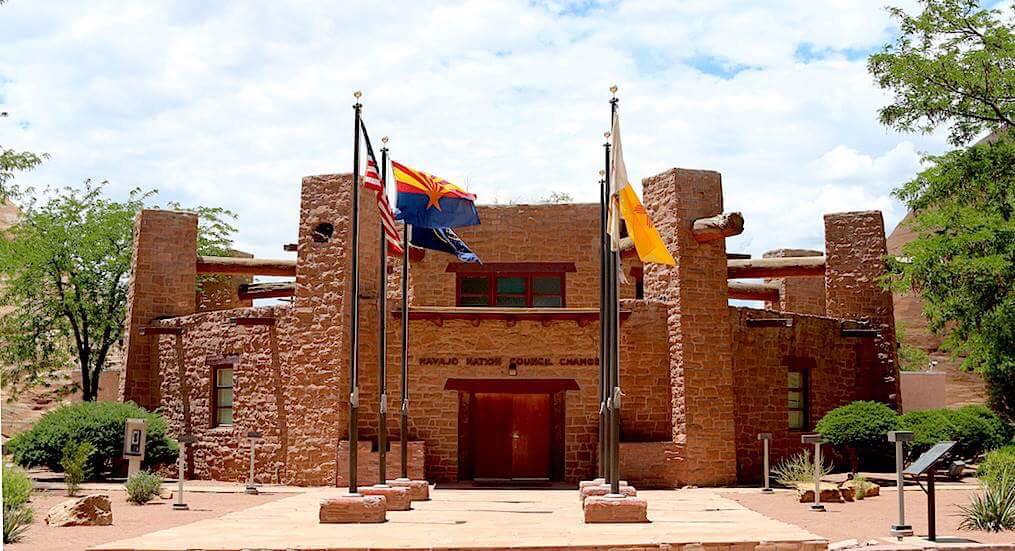Covid-19 vaccine plan draft for the Navajo Nation received by Health, Education, and Human Services Committee
WINDOW ROCK, Ariz. — A near-final coronavirus (Covid-19) vaccine plan was shared with the Health, Education, and Human Services Committee (HEHSC) of the 24th Navajo Nation Council on Nov. 25 by the Navajo Area Indian Health Service (NAIHS). The plan, presented by NAIHS Chief Medical Officer Dr. Loretta Christiansen, will coordinate the delivery of vaccine doses across the IHS system once the Federal Drug Administration approves one or multiple vaccines (FDA).
The plan covers three phases in the development and distribution of accepted vaccines for Covid-19. Phase One calls for the shipment of a limited number of vaccine doses across the IHS system and to tribal partners. Phase Two is projected to begin in March or April and will include a massive delivery of millions of doses. Phase 3, possibly further into springtime, will begin when the doses of the vaccines are widely available.
The IHS proposed an estimated 2,056,347 people to be vaccinated throughout the IHS system. This includes 43,783 healthcare personnel, 120,671 essential workers, 76,311 patients in tribal long-term care facilities, 374,411 elders and 894,260 patients at high-risk factors for Covid-19 illness. The remaining 546,911 of the population estimate includes young healthy adults.
The draft plan also outlines the initial parameters for prioritizing who receives the initial doses of the vaccine. Christiansen said the plan’s Tier 1 priority listing includes those directly involved in Covid-19 care, first responders, elders in congregate settings, essential personnel and people with two or more specified medical conditions. Those conditions include cancer, chronic kidney disease, COPD, pulmonary disease, organ transplant, obesity, heart conditions and diabetes.
Tier 2 includes: healthcare personnel with direct non-Covid-19 contact, teachers, school staff, child care workers, frontline critical infrastructure, people with one comorbid condition, those living or working in an unsheltered domicile, incarcerated people, substance abuse or mental illness patients, other congregate settings and older adults over 65 years of age without comorbidities.
Tier 3 includes young adults, children, workers in non-essential businesses and Tier 4 consists of all other patients.
To prepare for any eventual Covid-19 vaccine, the IHS is telling the public to get vaccinated for the flu virus as soon as possible. Christiansen stated people should not overlap the flu vaccine with the Covid-19 vaccine by at least two weeks.
Christiansen stated an initial Covid-19 vaccine would need to be followed with a second dose at 21 or 28 days after the first dose. IHS is coordinating with suppliers to ensure the second doses are held in cold storage and shipped at the appropriate time to avoid spoilage.
IHS is currently administering four treatments for Covid-19 symptoms: remdesivir, dexamethasone, bamlanivimab and a combined treatment of casirivimab and imdevimab known as Regeneron. These treatments require consent from patients since they are FDA-approved through emergency use authorization (EUA).
Christiansen stated IHS will use the Vaccine Adverse Event Reporting System (VAERS) to closely track the safety of vaccines administered across the system. Additionally, the IHS will utilize the Vaccine Tracking System (VTrckS) through the Center for Disease Control and Prevention (CDC) for coordinated vaccine ordering.
The ongoing studies involving a potential vaccine developed by Pfizer currently underway at the Chinle Comprehensive Health Care Center, Gallup Indian Medical Center and Northern Navajo Medical Center, will provide researchers data specific to the Navajo and Native American populations, said Christiansen.
In response to delegates regarding a timeline of a potential vaccine, Christiansen said the decision to accept a vaccine for distribution comes from the federal government. The earliest possibility for distribution could be from mid- to late-December for Phase 1. She indicated Dr. Anthony Fauci, director of the National Institute of Allergy and Infectious Diseases, projected April 2021 for widespread availability for a Covid-19 vaccine.
NAIHS is currently working to expand the amount of volunteer medical staff and response teams that come to the Navajo Nation to assist. That task is more difficult, said Christiansen, due to the holiday season and greater restrictions on leaving volunteers’ regular positions due to uncontrolled spread across the country.
The HEHSC accepted the report with a vote of 4 in favor and 0 opposed. NAIHS Director Roselyn Tso thanked all the medical and professional staff within the IHS, the Navajo Nation’s 638-triballly-controlled health care facilities and Navajo Nation personnel for their service during the Covid-19 pandemic. She stated the NAIHS will continue supporting planning activities relating to the distribution and administration of a potential Covid-19 vaccine, which includes vaccine training currently underway at the agency.
NAIHS anticipated submitting updates and revisions to the draft plan to federal administrators this week.

